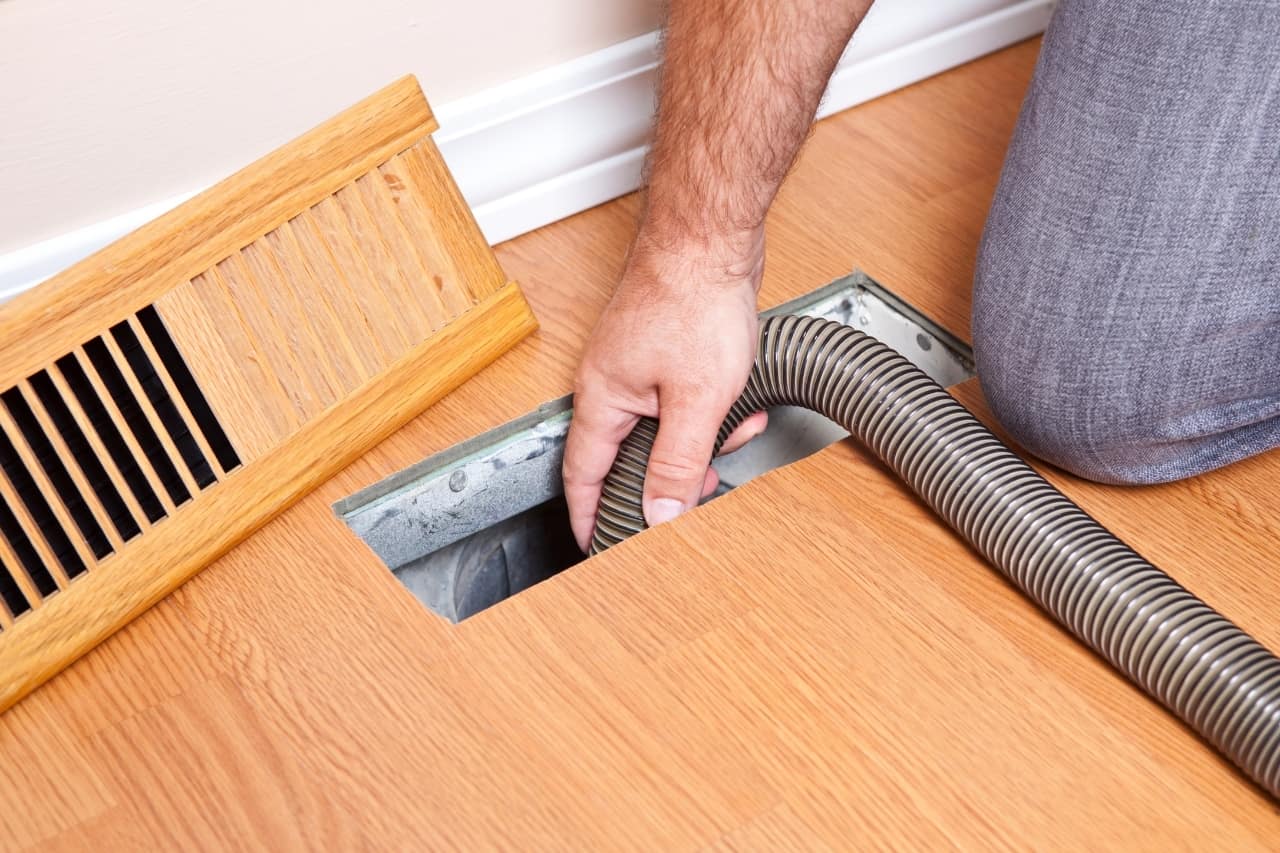How To Insulate Rectangular Ductwork

homedude is reader-supported. When you buy through links on our site, We may earn an affiliate commission. Learn more
Insulating ductwork prevents or minimizes energy loss to the surrounding spaces, saving you significant energy costs.
The specific steps for how to insulate rectangular ductwork depend on whether the ductwork is already in place or not. The procedure is much simpler if the ductwork has not been installed already. Otherwise, you will have to maneuver tight spaces between the ductwork and beams. The best method of insulating rectangular ducts is using fiberglass insulation with foil on the upper side. You can use rigid fiberglass foam or flexible fiberglass duct insulation.
Here are the steps for insulating rectangular ductwork using either rigid or flexible fiberglass insulation.
How To Insulate Rectangular Ductwork That Has Not Been Installed

Tools
- Rigid or flexible fiberglass insulation
- Utility knife
- Utility scissors
- Mastic, mastic tape, or metallic foil duct tape
- Protective gear: goggles, protective clothing, gloves, and a dust mask
- Square
- Worktable
- Tape measure
- Foam core
Steps
1. Begin By Wearing Your Protective Gear
Fiberglass insulation can cause severe irritation when it gets into contact with your skin. Wear long-sleeved clothes and handyman gloves. Do not wear latex gloves as they tend to easily tear if the duct tape sticks on them. Instead, wear your goggles and cover both the mouth and the nose with a dust mask.
2. Seal The Seams
If the seams are not airtight, they may serve as an outlet for hot air, reducing the insulation material’s efficiency. Therefore, it is best to seal them before insulating the ductwork. Next, apply mastic or metallic foil tape along the seams.
3. Install Insulation On The Rectangular Ductwork
Below are the specific steps depending on whether you are using rigid fiberglass sheets or flexible insulation material. Either way, wipe the foil-side of the insulation to get rid of any dust particles. If there are dust particles on the foil side of the insulation, the metallic foil tape will not hold the insulation together for long.
How To Install Rigid Fiberglass Insulation
- Take the dimensions of each side of the rectangular ductwork
- Lay the insulation on the worktable. Use a square to measure these dimensions on the fiberglass sheets and a pencil or felt tip marker to mark the cutting lines
- Using the utility knife, cut the rigid fiberglass sheets on the marked lines. You may need to repeat the cut to separate the sheets
- Using the utility scissors, cut several small pieces of foil duct tape and lay them on the edges of your worktable
- Pick one of the cut sheets and lay it against the respective side of the duct. Do not push it in so much that it compresses the fiberglass
- Apply the small pieces of foil duct tape you had cut earlier across the edges of the sheet to attach it to the ductwork
- Repeat the above two steps for all sides of the rectangular duct
- Apply the foil duct tape along the length of the joints where the sheets meet. If need be, apply several layers of tape to ensure it is fully sealed
- The insulated ductwork is ready for installation
How To Install Flexible Fiberglass Insulation
- Measure the cumulative width and thickness of the rectangular duct. Pick one edge of the rectangular duct as a starting point
- Take the tape measure all-around the duct back to the starting point. Write down the measurements and add two more inches
- Measure the length of the rectangular duct tape
- Layout the fiberglass roll or batts. Use the tape measure to measure the cumulative width of the fiberglass roll. If it is wider than the width of one batt or roll, combine two or more. If you combine two batts, use metallic foil tape or mastic tape to ensure that they are well joined with no air gap
- Place one edge of the cut-out insulation in the middle of the top side. Then, wrap the insulation around the rectangular duct until it slightly overlaps the starting point
- Seal it securely using the mastic tape or metallic foil duct
How To Insulate A Rectangular Ductwork Already In Place
- Wear your protective gear
- Wipe off any dust on the ductwork
- Turn on the heating/cooling system and inspect the ducts for any air leaks. Pay close attention to the connection points as they are more prone to air leaks. Then, turn off the heating/cooling system
- If you have any leakage, cover the connection points with metallic foil tape or apply mastic. Even if there is no air leakage, applying mastic on the tight connection points and metallic foil duct tape on all other joints is recommended to ensure the ductwork is fully airproof
- Measure the ductwork dimensions. Identify tight spots that may be difficult to get the insulation material to. The idea is to get as much of the duct covered as possible.
- Prepare and install the insulation material
Rigid fiberglass sheets fit better in tight spaces than flexible fiberglass. Therefore, you can install rigid fiberglass for consistency or flexible fiberglass in easily accessible and rigid fiberglass sheets in tight areas.
Use foam core on very tight areas such as between the supply air and the supply trunk of the air ducts. The foam core ductwork insulation is thin and will easily slip between the spaces. Although it is not the most effective insulation material, it is better than no insulation in tight spots.
Do not cover the registers with the insulation material. In areas where one side of the ductwork is too close to a beam, see if there is a bit of space between the ductwork and beam where you can slide in a rigid fiberglass sheet or foam core.
Don’t worry about securing the sheet to the ductwork if there is no space to do so. However, in the areas where you have easy access, seal the joints with duct tape.
Conclusion
Insulating rectangular ductwork that has not been installed is easy and straightforward. You can do it on your own, even with amateur handyman skills. However, you may require professional assistance with ductwork insulation if the ductwork is already in place.
Frequently Asked Questions
What Is the Recommended R-Value for Ductwork Insulation?
An R-Value of 6 or higher is recommended for most types of HVAC ductwork, including rectangular ductwork.
Can I Use Standard Duct Tape for My Insulation Work?
While some people opt to use it as it is more readily available, it does not hold as firmly or for as long as metallic foil duct tape or mastic tape. As a result, the insulation may fall off after are few days or be exposed to air or wind.





